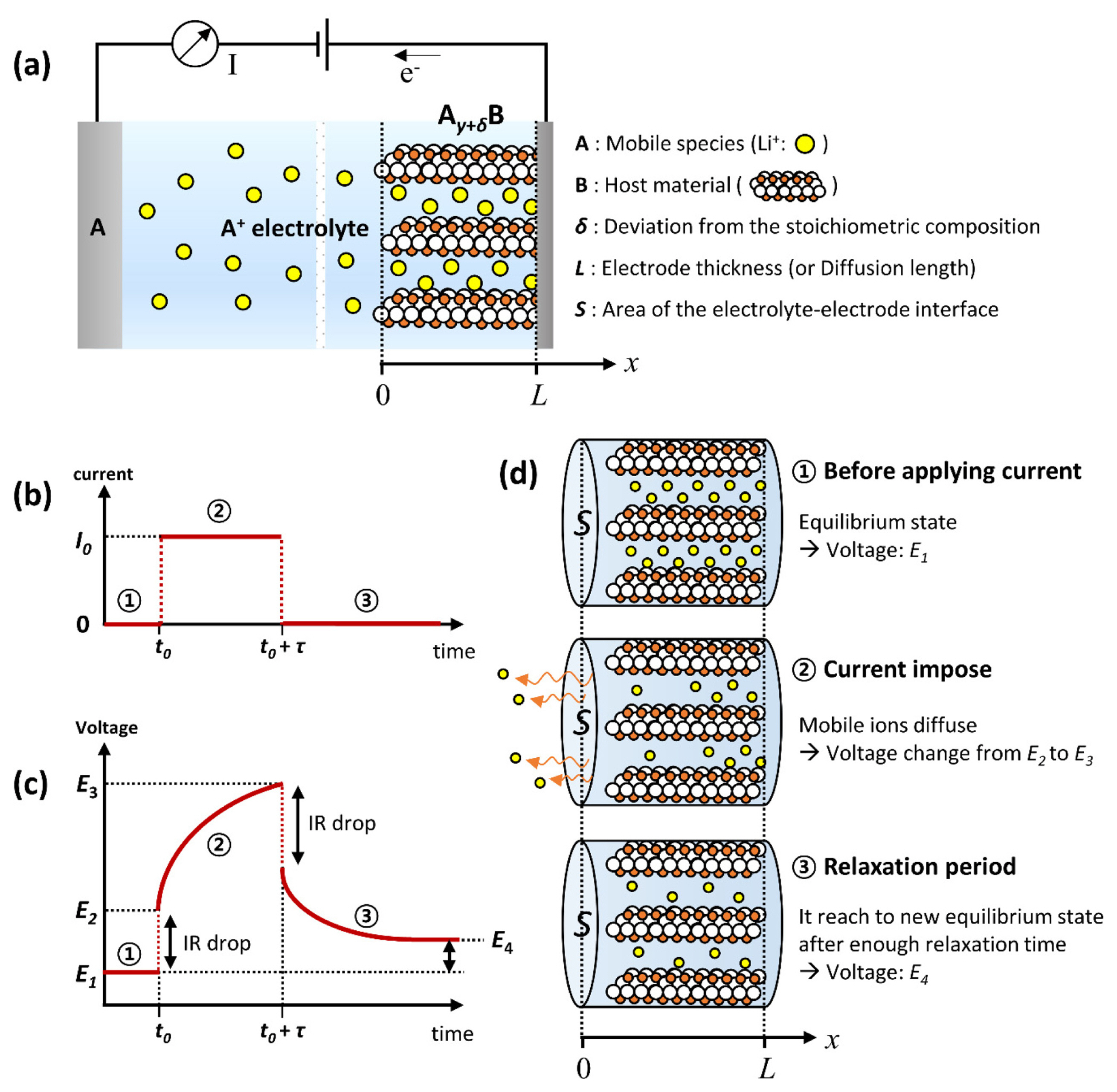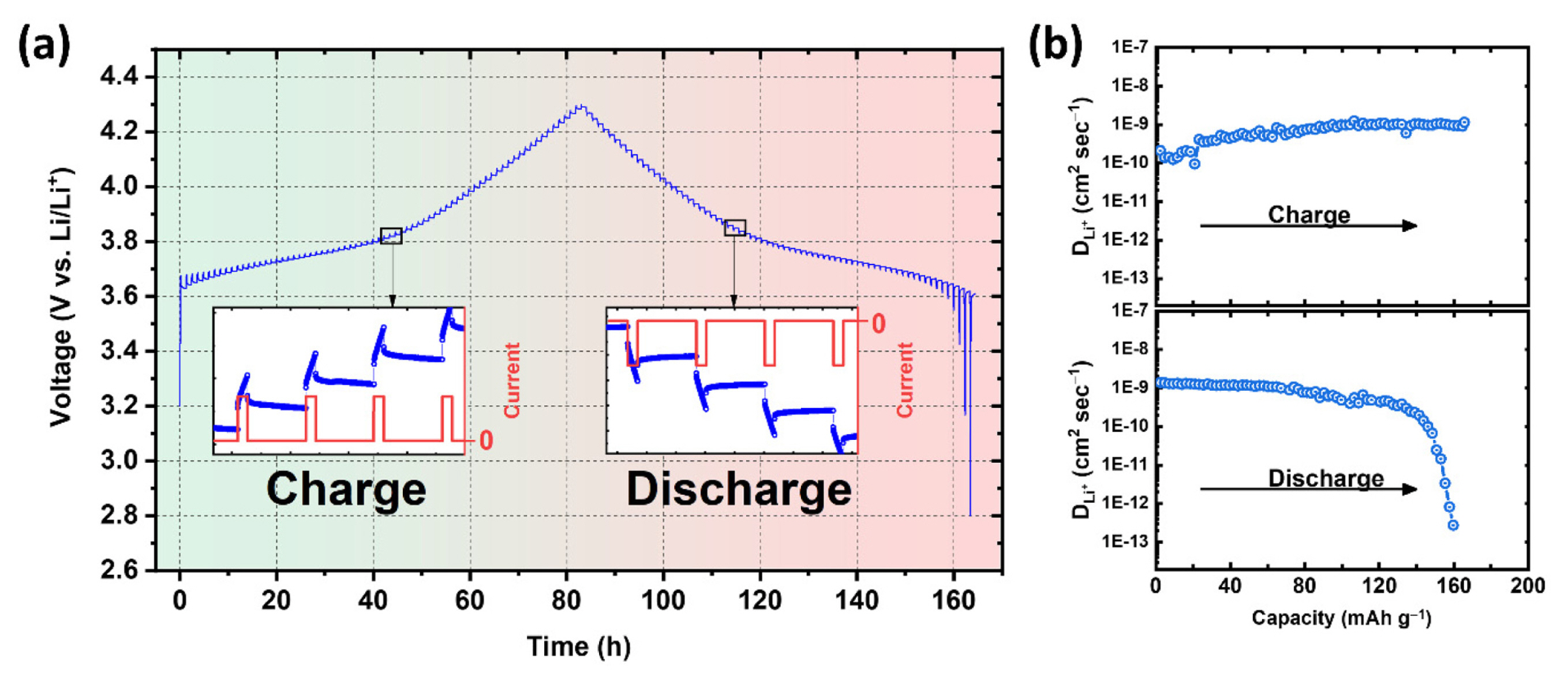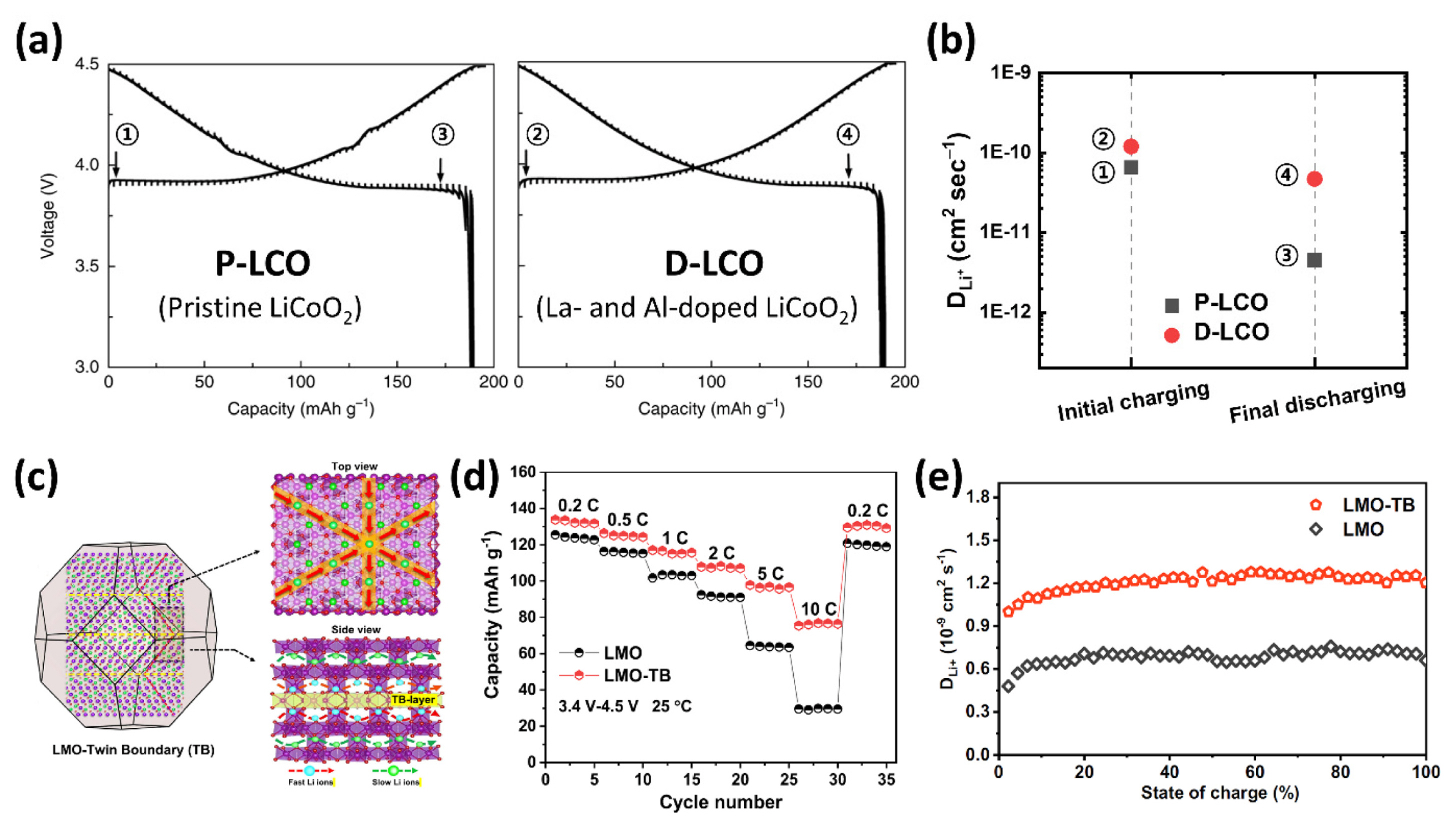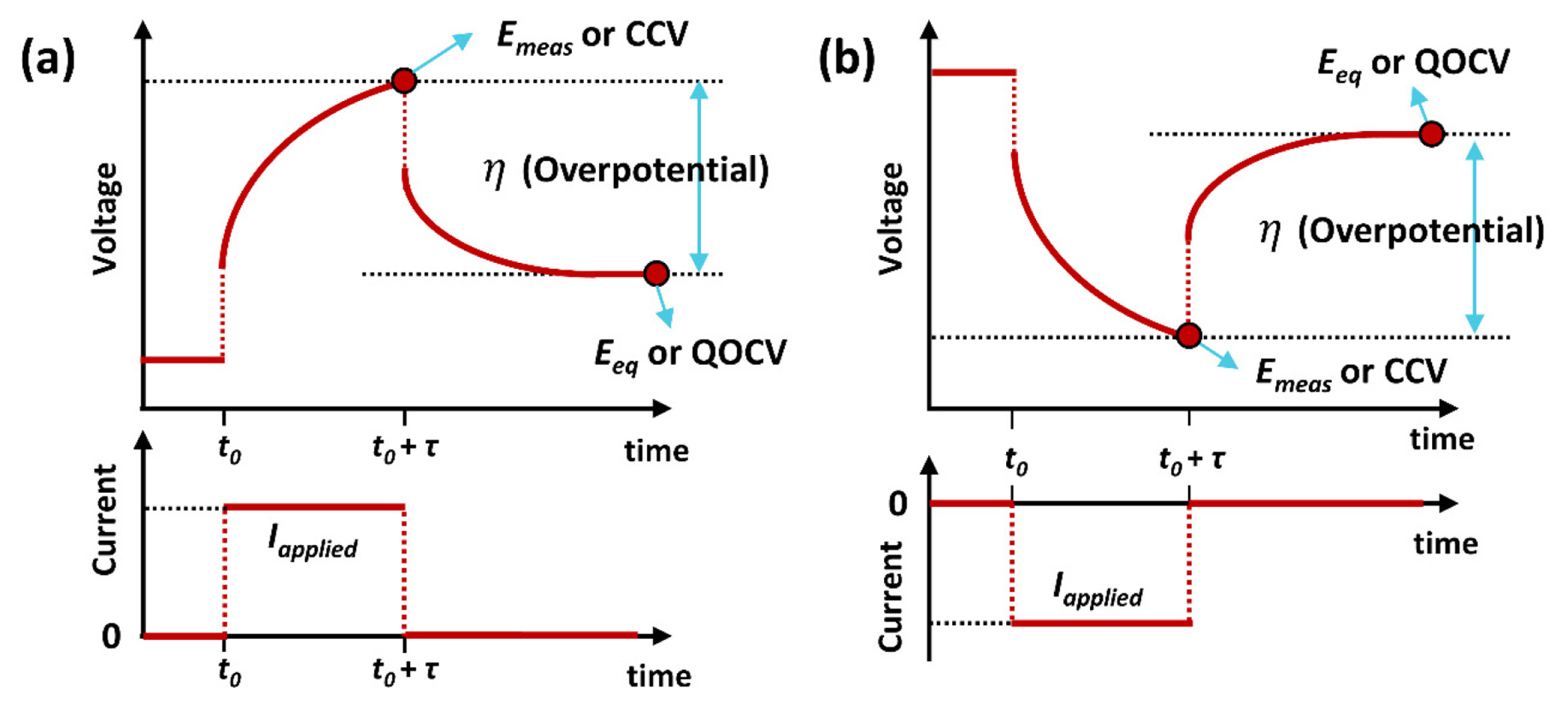[1] R. Schmuch, R. Wagner, G. Hörpel, T. Placke and M. Winter,
Nat Energy,
2018,
3(
4), 267–278.


[2] D. Larcher and J-M. Tarascon,
Nat Chem,
2015,
7(
1), 19–29.


[3] JB. Goodenough and K-S. Park,
J Am Chem Soc,
2013,
135(
4), 1167–1176.

[4] MS. Whittingham,
Science,
1976,
192(
4244), 1126–1127.

[5] K. Mizushima, PC. Jones, PJ. Wiseman and JB. Goodenough,
Mater Res Bull,
1980,
15(
6), 783–789.

[6] G. Harper, R. Sommerville, E. Kendrick, L. Driscoll, P. Slater, R. Stolkin, A. Walton, P. Christensen, O. Heidrich, S. Lambert, A. Abbott, K. Ryder, L. Gaines and P. Anderson,
Nature,
2019,
575(
7781), 75–86.


[7] W. Lee, J. Kim, S. Yun, W. Choi, H. Kim and W-S. Yoon,
Energy Environ Sci,
2020,
13(
12), 4406–4449.

[8] T. Kim, W. Choi, H-C. Shin, J-Y. Choi, JM. Kim, MS. Park and W-S. Yoon,
J Electrochem Sci Technol,
2020,
11(
1), 14–25.


[9] N. Elgrishi, KJ. Rountree, BD. McCarthy, ES. Rountree, TT. Eisenhart and JL. Dempsey,
J Chem Educ,
2018,
95(
2), 197–206.

[10] W. Choi, H-C. Shin, JM. Kim, J-Y. Choi and W-S. Yoon,
J Electrochem Sci Technol,
2020,
11(
1), 1–13.


[11] Q. Wang, S. Mariyappan, G. Rousse, AV. Morozov, B. Porcheron, R. Dedryvère, J. Wu, W. Yang, L. Zhang, M. Chakir, M. Avdeev, M. Deschamps, Y-S. Yu, J. Cabana, M-L. Doublet, AM. Abakumov and J-M. Tarascon,
Nat Mater,
2021,
20(
3), 353–361.


[12] R. Wang, X. Chen, Z. Huang, J. Yang, F. Liu, M. Chu, T. Liu, C. Wang, W. Zhu, S. Li, S. Li, J. Zheng, J. Chen, L. He, L. Jin, F. Pan and Y. Xiao, Nat Commun, 2021, 12(1), 1–10.
[13] C. Wang, R. Yu, S. Hwang, J. Liang, X. Li, C. Zhao, Y. Sun, J. Wang, N. Holmes, R. Li, H. Huang, S. Zhao, L. Zhang, S. Lu, D. Su and X. Sun,
Energy Storage Mater,
2020,
30, 98–103.

[14] N. Yabuuchi, S. Kumar, HH. Li, Y-T. Kim and Y. Shao-Horn,
J Electrochem Soc,
2007,
154(
6), A566.

[15] XH. Rui, N. Ding, J. Liu, C. Li and CH. Chen,
Electrochim Acta,
2010,
55(
7), 2384–2390.

[16] KM. Shaju, GVS. Rao and BVR. Chowdari,
Electrochim Acta,
2003,
48(
18), 2691–2703.

[17] L. Hong, L. Li, YK. Chen-Wiegart, J. Wang, K. Xiang, L. Gan, W. Li, F. Meng, F. Wang, J. Wang, Y-M. Chiang, S. Jin and M. Tang, Nat Commun, 2017, 8(1), 1–13.
[18] W. Weppner and RA. Huggins,
J Electrochem Soc,
1977,
124(
10), 1569–1578.

[19] J. Crank, The mathematics of diffusion. Oxford university press, New York, 1979.
[20] Z. Wei, D. Wang, M. Li, Y. Gao, C. Wang, G. Chen and F. Du,
Adv Energy Mater,
2018,
8(
27), 1801102.

[21] P. Zhou, X. Liu, J. Weng, L. Wang, X. Wu, Z. Miao, J. Zhao, J. Zhou and S. Zhuo,
J Mater Chem A,
2019,
7(
2), 657–663.

[22] SN. Lim, JY. Seo, DS. Jung, W. Ahn, HS. Song, S-H. Yeon and SB. Park,
J Alloys Compd,
2015,
623, 55–61.

[23] KM. Shaju, GV. Subba Rao and BVR. Chowdari,
J Mater Chem,
2003,
13(
1), 106–113.

[24] Z. Li, F. Du, X. Bie, D. Zhang, Y. Cai, X. Cui, C. Wang, G. Chen and Y. Wei,
J Phys Chem C,
2010,
114(
51), 22751–22757.

[25] S. Cui, Y. Wei, T. Liu, W. Deng, Z. Hu, Y. Su, H. Li, M. Li, H. Guo, Y. Duan, W. Wang, M. Rao, J. Zheng, X. Wang and F. Pan,
Adv Energy Mater,
2016,
6(
4), 1501309.

[26] K. Tang, X. Yu, J. Sun, H. Li and X. Huang,
Electrochim Acta,
2011,
56(
13), 4869–4875.

[27] Q. Liu, X. Su, D. Lei, Y. Qin, J. Wen, F. Guo, YA. Wu, Y. Rong, R. Kou, X. Xiao, F. Aguesse, J. Bareño, Y. Ren, W. Lu and Y. Li,
Nat Energy,
2018,
3(
11), 936–943.


[28] W. Lee, S. Muhammad, T. Kim, H. Kim, E. Lee, M. Jeong, S. Son, J-H. Ryou and W-S. Yoon,
Adv Energy Mater,
2018,
8(
4), 1701788.

[29] C. Hong, Q. Leng, J. Zhu, S. Zheng, H. He, Y. Li, R. Liu, J. Wan and Y. Yang,
J Mater Chem A,
2020,
8(
17), 8540–8547.

[30] S. Lou, Q. Liu, F. Zhang, Q. Liu, Z. Yu, T. Mu, Y. Zhao, J. Borovilas, Y. Chen, M. Ge, X. Xiao, W-K. Lee, G. Yin, Y. Yang, X. Sun and J. Wang, Nat Commun, 2020, 11(1), 1–10.
[31] J. Kim, W. Lee, J. Seok, E. Lee, W. Choi, H. Park, S. Yun, M. Kim, J. Lim and W-S. Yoon,
J Energy Chem,
2022,
66, 226–236.

[32] A. Hess, Q. Roode-Gutzmer, C. Heubner, M. Schneider, A. Michaelis, M. Bobeth and G. Cuniberti,
J Power Sources,
2015,
299, 156–161.

[33] G. Assat, C. Delacourt, DAD. Corte and J-M. Tarascon,
J Electrochem Soc,
2016,
163(
14), A2965–A2976.

[34] E. Lim, H. Shim, S. Fleischmann and V. Presser,
J Mater Chem A,
2018,
6(
20), 9480–9488.

[35] J-S. Hong and JR. Selman,
J Electrochem Soc,
2000,
147(
9), 3190.

[36] AJ. Gmitter, F. Badway, S. Rangan, RA. Bartynski, A. Halajko, N. Pereira and GG. Amatucci,
J Mater Chem,
2010,
20(
20), 4149–4161.

[37] E. Deiss,
Electrochim Acta,
2005,
50(
14), 2927–2932.

[38] Y. Zhu and C. Wang,
J Phys Chem C,
2010,
114(
6), 2830–2841.

[39] KJ. Griffith, KM. Wiaderek, G. Cibin, LE. Marbella and CP. Grey,
Nature,
2018,
559(
7715), 556–563.


[40] JS. Horner, G. Whang, DS. Ashby, IV. Kolesnichenko, TN. Lambert, BS. Dunn, AA. Talin and SA. Roberts, arXiv, 2021, 2107, 05835.
[41] PP. Prosini, M. Lisi, D. Zane and M. Pasquali,
Solid State Ionics,
2002,
148(
1–2), 45–51.

[42] N. Ding, J. Xu, YX. Yao, G. Wegner, X. Fang, CH. Chen and I. Lieberwirth,
Solid State Ionics,
2009,
180(
2–3), 222–225.

[43] S. Yang, X. Wang, X. Yang, Y. Bai, Z. Liu, H. Shu and Q. Wei,
Electrochim Acta,
2012,
66, 88–93.

[44] T. Schied, A. Nickol, C. Heubner, M. Schneider, A. Michaelis, M. Bobeth and G. Cuniberti,
ChemPhysChem,
2021,
22(
9), 885–893.

[45] C. Liu, ZG. Neale and G. Cao,
Mater Today,
2016,
19(
2), 109–123.

[46] JK. Park, Principles and Applications of Lithium Secondary Batteries. Wiley-VCH, Germany,
2012.

[47] D. Kim, J-M. Lim, Y-G. Lim, J-S. Yu, M-S. Park, M. Cho and K. Cho,
Chem Mater,
2015,
27(
18), 6450–6456.

[48] P-C. Tsai, B. Wen, M. Wolfman, M-J. Choe, MS. Pan, L. Su, K. Thornton, J. Cabana and Y-M. Chiang,
Energy Environ Sci,
2018,
11(
4), 860–871.

[49] J. Yang, C. Du, T. Wang, Y. Gao, X. Cheng, P. Zuo, Y. Ma, J. Wang, G. Yin, J. Xie and B. Lei,
Energies,
2018,
11(
12), 3444.

[50] F. Zheng, Y. Xing, J. Jiang, B. Sun, J. Kim and M. Pecht,
Appl Energy,
2016,
183, 513–525.

[51] P. Novák,
Electrochim Acta,
1985,
30(
12), 1687–1692.

[52] PL. Taberna, S. Mitra, P. Poizot, P. Simon and J-M. Tarascon,
Nat Mater,
2006,
5(
7), 567–573.


[53] ZH. Cui, XX. Guo and H. Li,
Energy Environ Sci,
2015,
8(
1), 182–187.

[54] G. Jiang, H. Han, W. Zhuang, X. Xu, S. Kaskel, F. Xu and H. Wang,
J Mater Chem A,
2019,
7(
29), 17561–17569.

[55] J. Pan, Y. Zhang, L. Li, Z. Cheng, Y. Li, X. Yang, J. Yang and Y. Qian,
Small Methods,
2019,
3(
10), 1900231.

[56] SH. Lee, G. Yoo, J. Cho, S. Ryu, YS. Kim and J. Yoo,
J Alloys Compd,
2020,
829, 154566.

[57] OB. Chae, S. Park, JH. Ryu and SM. Oh,
J Electrochem Soc,
2013,
160(
1), A11–A14.

[58] B. Gerelt-Od, H. Kim, UJ. Lee, J. Kim, N. Kim, YJ. Han, H. Son and S. Yoon,
J Electrochem Soc,
2018,
165(
2), A168–A174.












